Introduction
Screws are essential small items that prevent our world from falling apart. In this guide, we will explore the world of screws in depth. Indeed, there are many types of screws. You might have felt overwhelmed by the many options in a hardware store. You are not alone. Different types of screws suit different projects. It is important to choose the right one. By the end of this article, you will be able to identify various screws, like wood screws and drywall screws.
Learning about the different screws and how to use them can be interesting. It is not only about connecting two materials. It is a combination of art and science that keeps our furniture, homes, and electronics secure. For DIY projects or professional tasks, understanding screws can make the work easier, safer, and more lasting. So, let’s improve our knowledge of screws and explore these vital fasteners.
The Analysis of a Screw: Head, Shank, and Threads
What defines a screw? It consists of three main parts: the head, the shank, and the threads. The head is the visible part on the surface, which you turn. It has various shapes for different purposes. Some shapes allow the screw to sit flush with the material, while others provide more turning power. The shank is the long body of the screw. It can have threads along its entire length or just part of it. A smooth section near the head helps pull materials together. The threads are the spiral lines on the shank. They are crucial for holding materials together. The threads’ design, coarse or fine, affects how well the screw holds and how easy it is to use.
Moreover, the screw’s tip is also important. Some screws have a sharp tip to go through materials like wood. Others have a flat end, suitable for pre-drilled holes or tapped holes. Choosing the right features of a screw, based on the material and project, is key. It can make the difference between a strong connection and a problematic project.
Exploring Essential Types of Screws and Their Specific Uses
Wood Screws
In woodworking, wood screws, often featuring a smooth shank, prove to be immensely valuable. These screws are designed to securely connect pieces of wood, such as wood studs, without causing splits. With their coarse threads and sometimes a sharp tip, they can effectively penetrate the wood. Drilling a pilot hole before inserting the screw, especially in hard areas, can facilitate easier insertion and prevent the wood from splitting. Selecting the appropriate size and length is critical for various projects, from bookshelves to cabinets, ensuring durability and strength. For outdoor applications, opting for screws with a zinc coating is advisable to enhance weather resistance. It’s worth noting that deck screws, designed for specific outdoor applications, differ in their use.
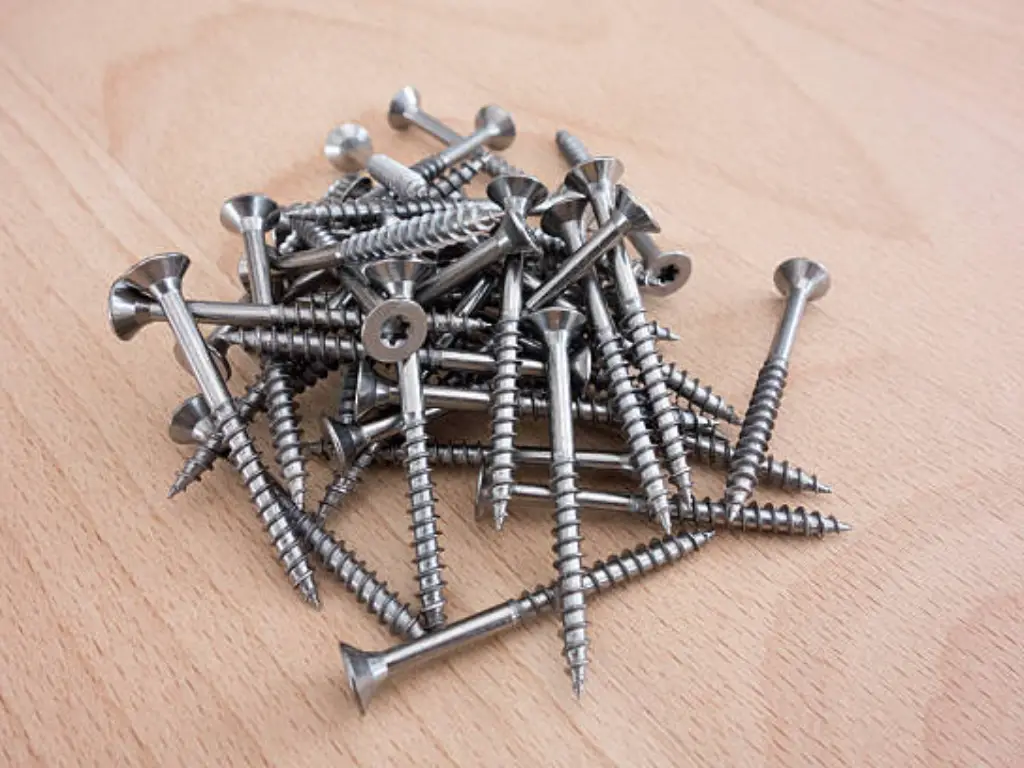
Machine Screws
Machine screws, critical for fastening metal parts together in machinery or electronic devices, distinguish themselves from wood screws by featuring fine threads and a range of sizes suitable for fitting into threaded holes in metal studs or machine components. Their versatility in size and head shape allows for flexibility in usage. Despite their diminutive size, choosing the correct type and size enables them to bear substantial weight. It’s fundamental to pair these screws precisely with your equipment, utilizing tools like a hammer drill for metal, to prevent damage. Machine screws are indispensable for tasks involving computer repairs or machinery assembly.
Sheet Metal Screws
Sheet metal screws, equipped with sharp tips and coarse threads, are designed to securely fasten sheet metal pieces. While not always necessary, pre-drilling a hole with a drill bit could facilitate smoother installation. Available in a variety of head types, these screws offer aesthetic flexibility alongside practical functionality. Selecting an appropriate length is crucial to ensure the screw does not protrude undesirably. Engaging sheet metal in projects, such as DIY vents or metal roofing repair, becomes simpler with these screws.
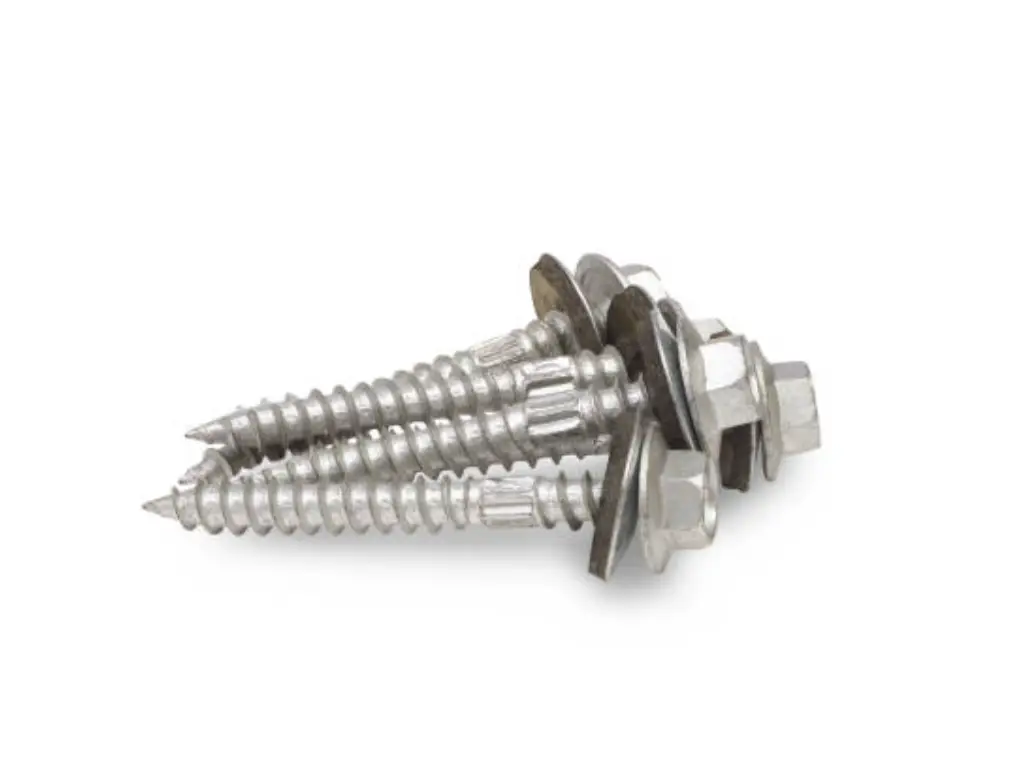
Drywall Screws
In the realm of home renovations, particularly when installing drywall on wood studs or metal studs, drywall screws are indispensable. They feature sharp tips and fine threads for a firm grip and stable hold, complemented by a flat head to achieve a smooth finish against the drywall surface. Utilizing the proper size and type of screw is essential, accommodating the specific material and thickness of the drywall to sidestep potential issues. Correctly selected drywall screws are key to achieving aesthetically pleasing and durable walls.
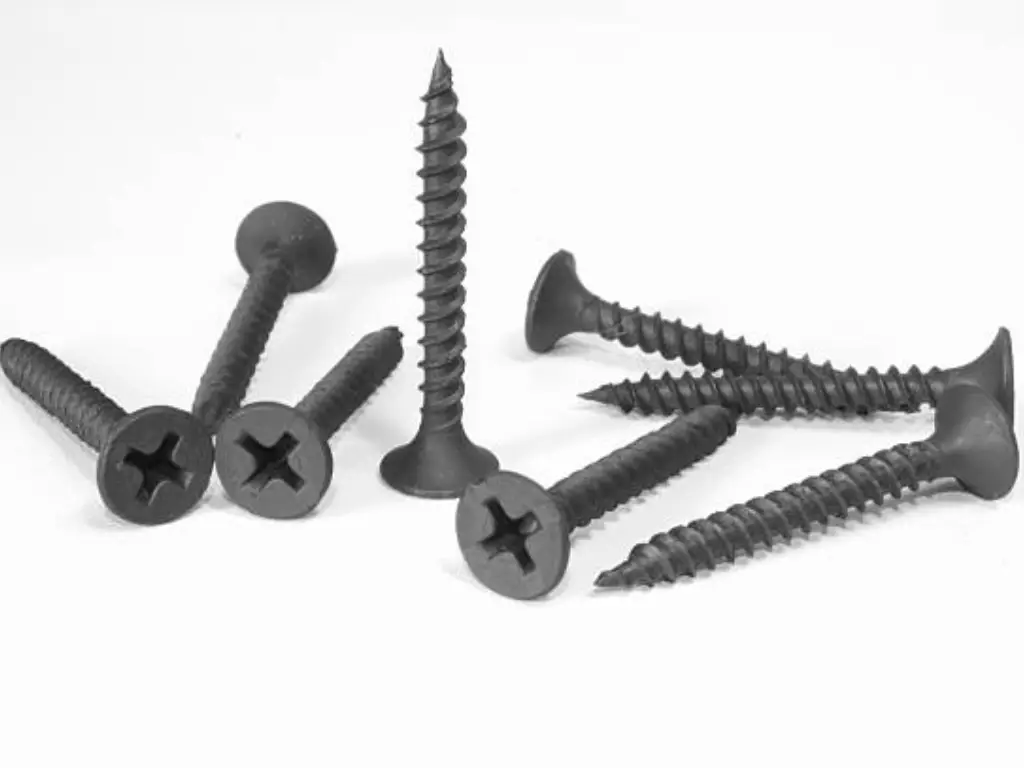
Concrete Screws
Dealing with concrete, brick, or mortar necessitates the use of concrete screws. These robust fasteners, typically requiring a hammer drill for pilot hole drilling, are engineered to anchor objects securely to masonry surfaces. Selecting a screw that matches the load requirements and material thickness is imperative. Additionally, their protective coating makes them suitable for exterior applications. Concrete screws ensure the resilience and stability of your masonry projects.
Deck Screws
For constructing outdoor decks and structures, deck screws are specifically formulated to endure external environmental challenges, including moisture and temperature fluctuations. Characterized by sharp tips and coarse threads, they offer a robust hold in materials like wood or composite, minimizing wood splitting and promoting a pristine appearance. Choosing deck screws that align with the dimensions and requirements of your outdoor project is crucial for ensuring the longevity and safety of your deck.
Screws of Different Head Types: Shapes and Functionalities
Flat Head
Flathead screws are designed to sit flush with the surface they’re inserted into, offering a sleek and unobtrusive look ideal for woodworking projects or instances where screws need to be concealed or painted over. Their design allows for a snug fit against materials, resulting in a smooth, seamless surface. They excel in applications where aesthetics are just as crucial as structural integrity, such as decking or furniture making, providing a sturdy yet visually pleasing finish.
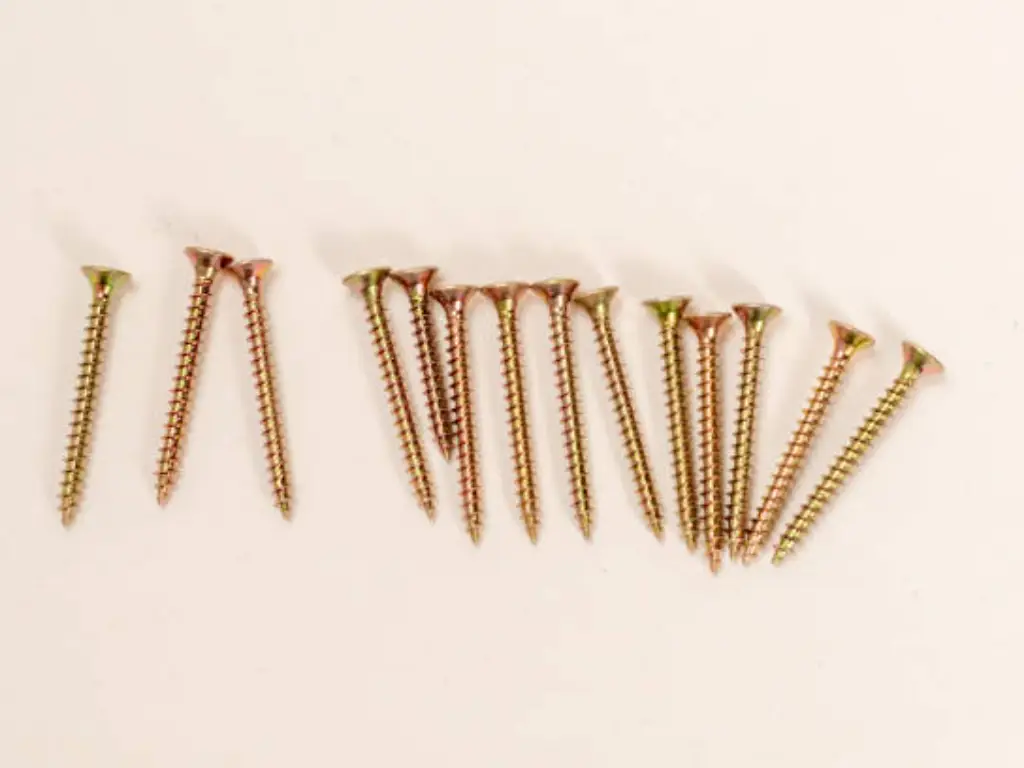
Round Head
Round-head screws protrude from the material, creating a noticeable dome shape. These screws are chosen for their aesthetic contribution, often used in furniture hardware where the head of the screw remains visible. The rounded design reduces the risk of damaging the material beneath, making it a safer choice for decorative purposes where functionality meets style.
Pan Head
Pan head screws feature a modestly rounded top, balancing subtlety and accessibility. Their design allows them to be versatile, finding applications in electronics, machinery, and woodworking without the need for countersinking. Their ease of installation and reliable hold make them suitable for projects where screws can remain visible without detracting from the overall appearance.
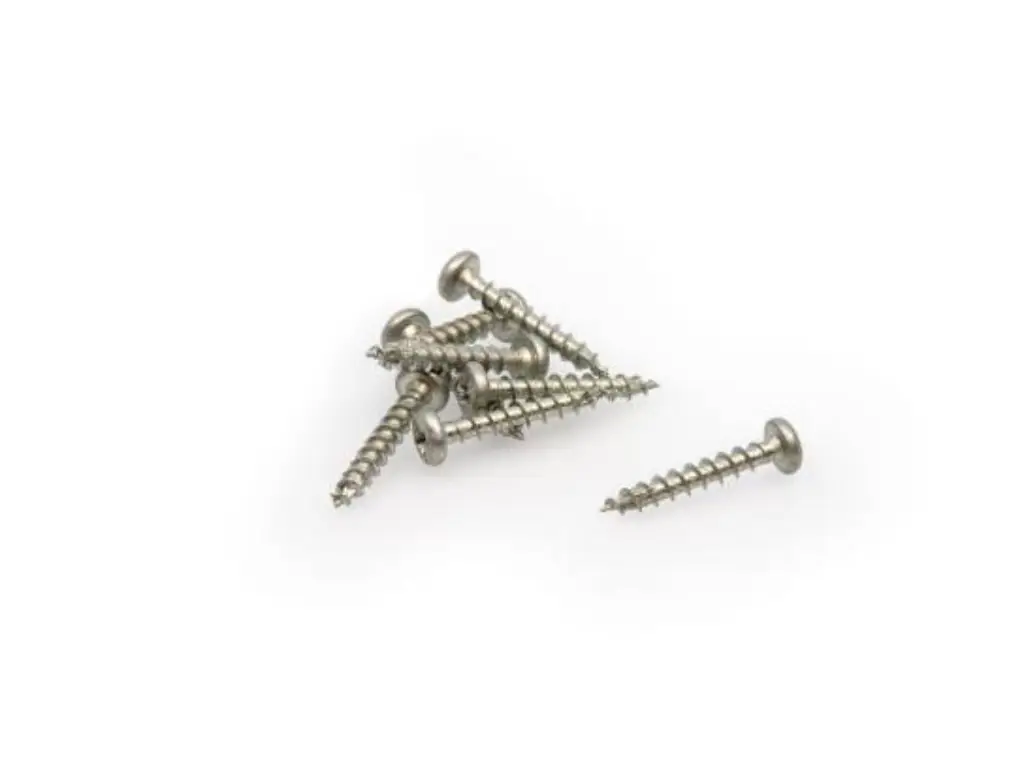
Countersunk Head
Countersunk head screws are specifically crafted to fit flush with or beneath the material’s surface, eliminating any protrusion that might snag or catch on clothing and equipment. Their compatibility with countersunk holes ensures that they provide a snug fit, enhancing both the aesthetics and safety of wood and metal projects alike.
Hex Head
Hex head screws, identifiable by their hexagonal head, are built for heavy-duty applications, where a wrench is used to apply significant torque, ensuring a secure fit. These screws are preferred for substantial construction projects, including building frameworks, automotive repairs, and industrial machinery, thanks to their high tensile strength and resistance to slipping.
Button Head
Button head screws offer a low-profile design coupled with an aesthetically pleasing finish, making them an excellent choice for automotive, electronic, and furniture applications where appearances matter. Their smooth, rounded top minimizes the risk of snagging or scratching, providing a safe option for consumer-facing products.
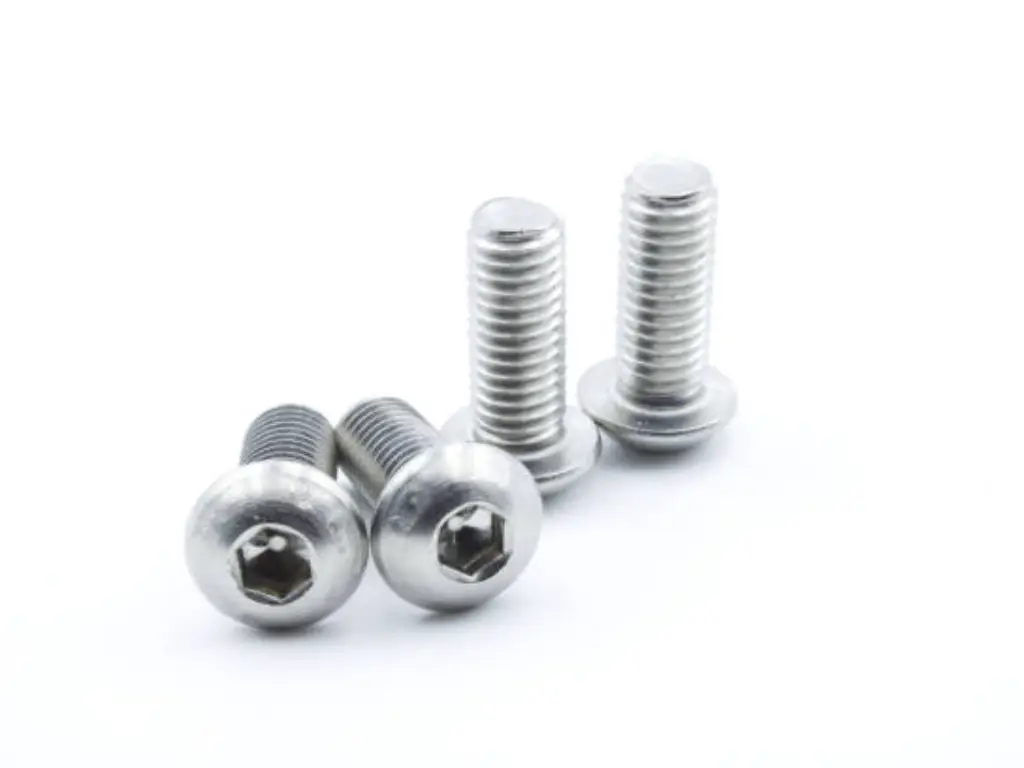
The Importance of Screw Drive Types: From Phillips to Robertson
Phillips
The Phillips screw head has a cross shape, making it a ubiquitous choice for various applications. It was specifically designed with a feature to prevent over-tightening by allowing the driver to slip out, known as “camming out”, once maximum torque is reached. This characteristic is beneficial as it minimizes potential damage to the material being fastened. However, this feature may be a drawback when greater force is required. For tasks where more torque is essential, Phillips screws, despite being user-friendly and only necessitating a straightforward screwdriver, may not suffice. In such scenarios, exploring other screw types and heads might provide a more suitable option.
Flathead (Slotted)
The flathead, or slotted, screw presents a simple design with a single groove. As the most traditional form of screw, it requires nothing more than a flat screwdriver for installation or removal. Nonetheless, its simplicity is accompanied by the risk of the driver slipping from the groove, which could lead to potential injury or damage to the working surface. Despite these considerations, flathead screws remain popular for applications that value aesthetic integrity, such as woodworking and restoration projects, where the aim is to maintain a vintage look.
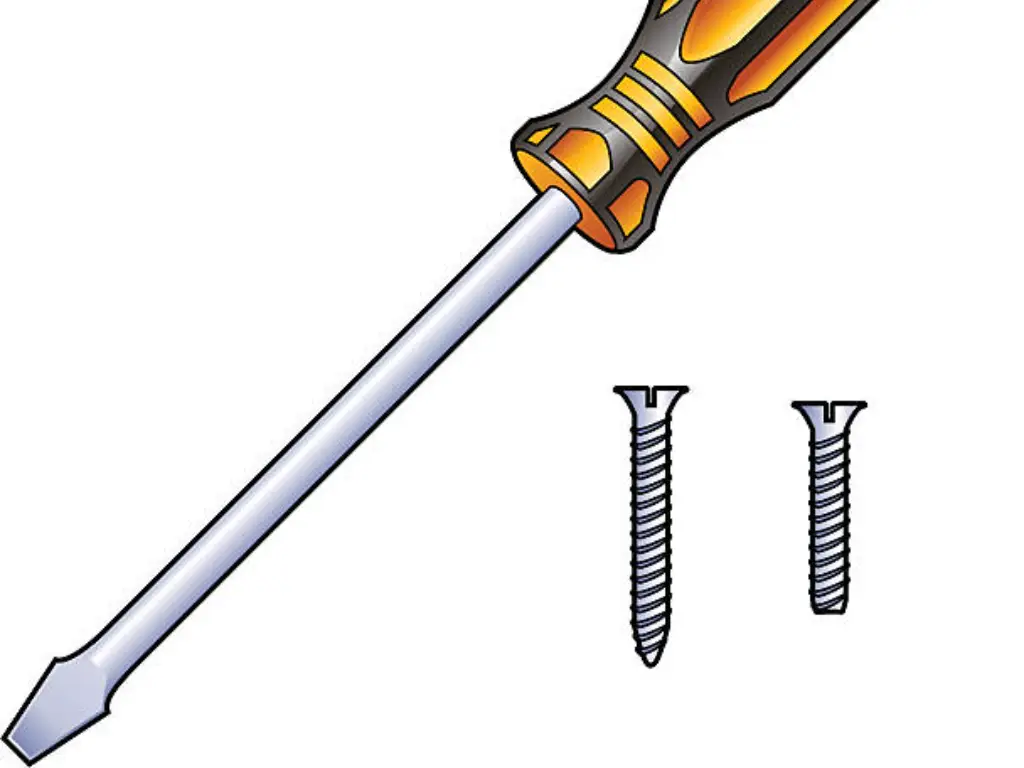
Torx (Star)
Characterized by its distinctive six-point star recess, Torx screws offer enhanced torque transmission without the driver slipping, making them ideally suited for tasks that demand considerable force. This security feature renders them increasingly favored in the automotive, electronic, and construction industries. The increased contact between the screw and the drill bit ensures efficient application of force, contributing to the longevity of both the screws and the tools utilized.
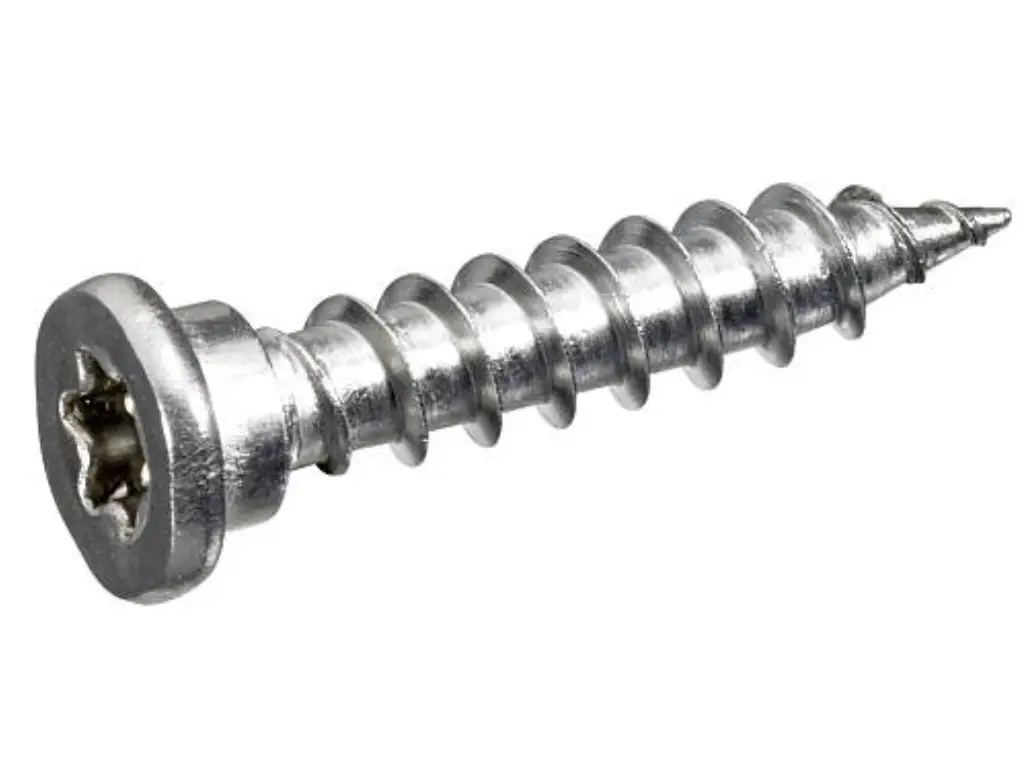
Hex (Allen)
Hex, or Allen screws, are distinguished by their hexagonal recess and require a specific Allen wrench for operation. This design allows for the application of significant torque, markedly reducing the risk of slippage and making these screws especially effective for securing furniture or machinery. Their sleek appearance and the added security (due to the less common nature of Allen wrenches) render them favorable for use in bicycles, automotive applications, and other scenarios where a robust connection is critical.
Robertson (Square)
Sporting a square recess, Robertson screws strike a balance between ease of use and securing capability. This design prevents stripping and slipping, making these screws particularly effective for construction and woodworking tasks. The driver’s tendency to stay embedded within the screw head facilitates one-handed operation, an advantageous feature when working in confined spaces or at heights. As a result, Robertson screws, with their ability to provide a reliable hold without compromising ease of use, are becoming increasingly popular not just in Canada, but globally.
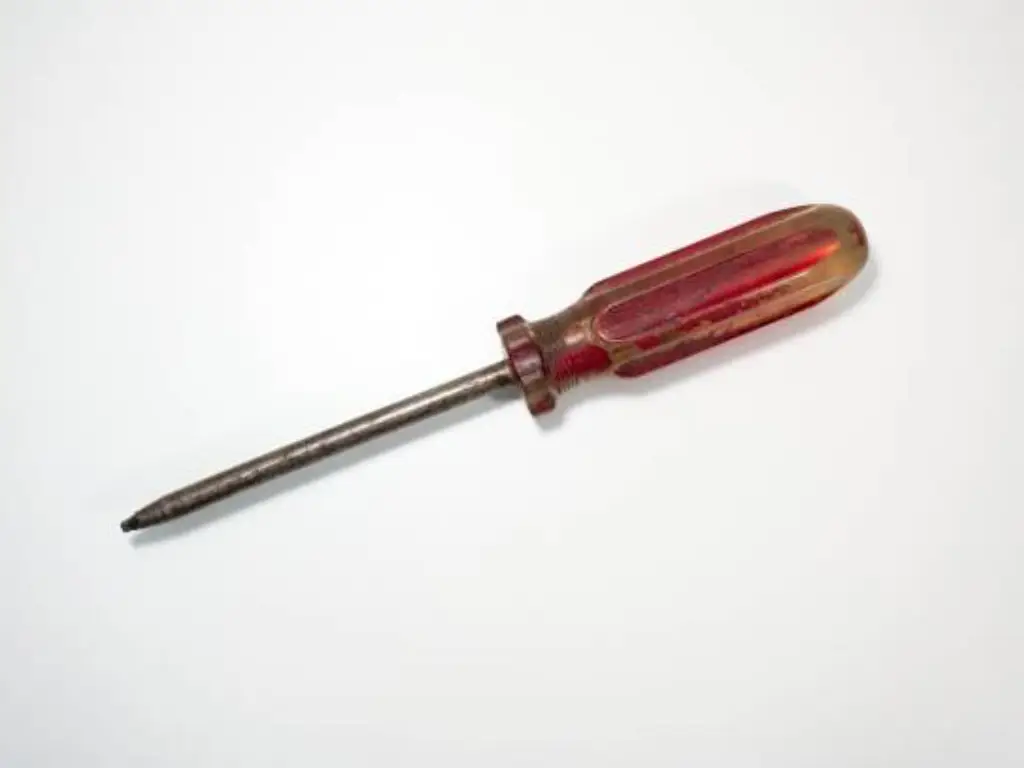
Understanding Screw Materials: Stainless Steel, Brass, and More
Stainless Steel
Stainless steel screws are valued for not rusting easily. This makes them great for outdoor use or in places with lots of chemicals. They are strong and last a long time without extra coatings. You’ll find them in boats, food processing areas, and hospitals, where avoiding rust is very important. They cost a bit more, but because they don’t need to be replaced often, they are usually worth the extra money.

Brass
Brass screws have a shiny gold color. This makes them great for decoration. Besides looking good, they don’t rust easily and can stop bacteria from growing. That’s why they are used near water and in making electrical things. But, they are softer than steel screws and can’t hold as much weight. Still, their unique look makes them preferred for furniture, musical instruments, and building decorations, adding both style and function.

Aluminum
Aluminum screws are light and resist rust well. This is perfect for when you need to keep things light, like in cars or planes. They don’t stick to magnets and are safe around electricity and flames. They are not as strong as steel or titanium screws, so they are better for easier jobs. Aluminum forms a protective layer that helps it last longer outside, even if it’s not in very tough conditions.
Carbon Steel
Carbon steel screws are very strong because they have carbon. They are used in building and machinery since they can handle a lot of weight. They usually have a coating, like zinc, to help them resist rust. This makes them good for both inside and outside. But, if they are in places that rust a lot, even these screws might eventually get rusty. So, it’s important to pick the right material for what you’re doing.
Alloy Steel
Alloy steel screws are made stronger by adding things like chromium and nickel. This means they can handle more tension and don’t wear out as quickly. They are good for when you need a lot of strength, like in cars, planes, and big machines. These special materials let the screws work well, even in very hot or pressured conditions. That’s why they are chosen for tough jobs.
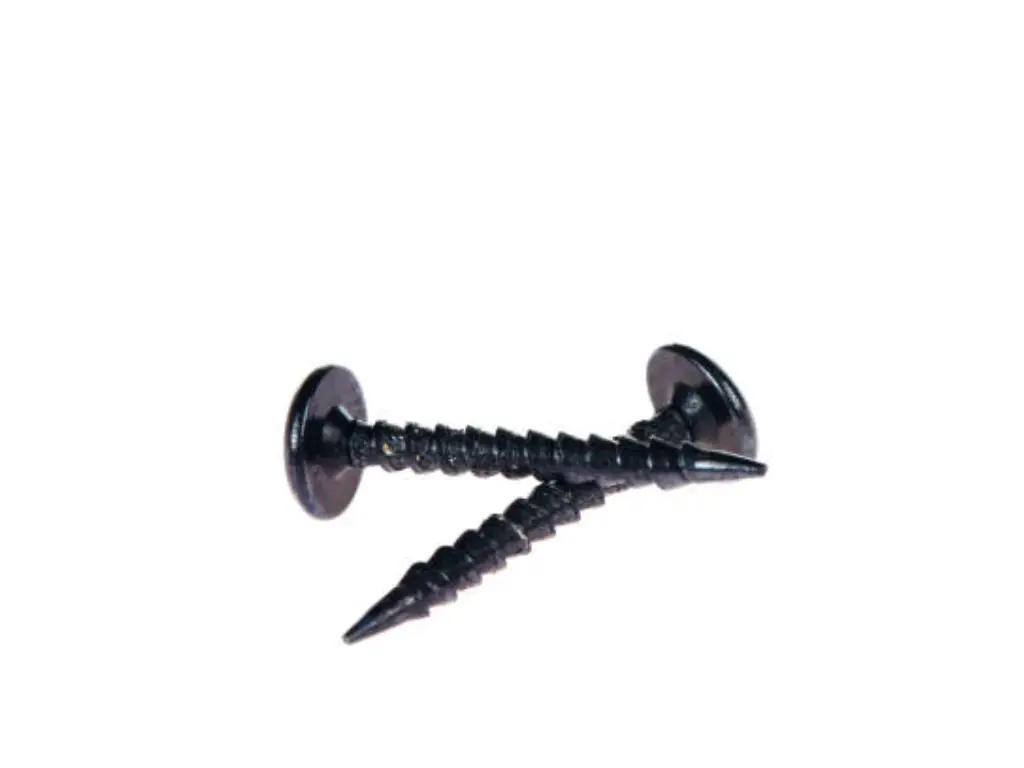
Titanium
Titanium screws are very strong but light, and they don’t rust even in seawater. This makes them perfect for boats, planes, and medical tools, where you want to keep things light but strong. They are more expensive, but because they last so long and work so well, they are often seen as worth the cost. Their performance in very tough conditions also makes them a top choice.
Selecting the Right Thread Type: Coarse versus Fine
Threads are the spirals on a screw’s body that give it its unique function. Now, let’s dive into the differences between coarse threads and fine threads. Coarse threads are like the powerhouses of the screw family. They work well in soft materials, such as wood. Their bigger spirals dig deep and hold tight. Plus, they’re easier to align and can be screwed in quickly, saving you time.
Fine threads are the detail-oriented members of the screw family. They excel in hard materials because their smaller spirals grip better for a stronger hold. They’re also better for delicate materials, as they’re less likely to cause splitting. However, they require more careful handling. Mistakes like cross-threading or over-tightening can weaken the hold or damage the material. So, when choosing between coarse and fine threads, think about the material and the weight it needs to support. The right choice leads to a more secure, reliable connection.
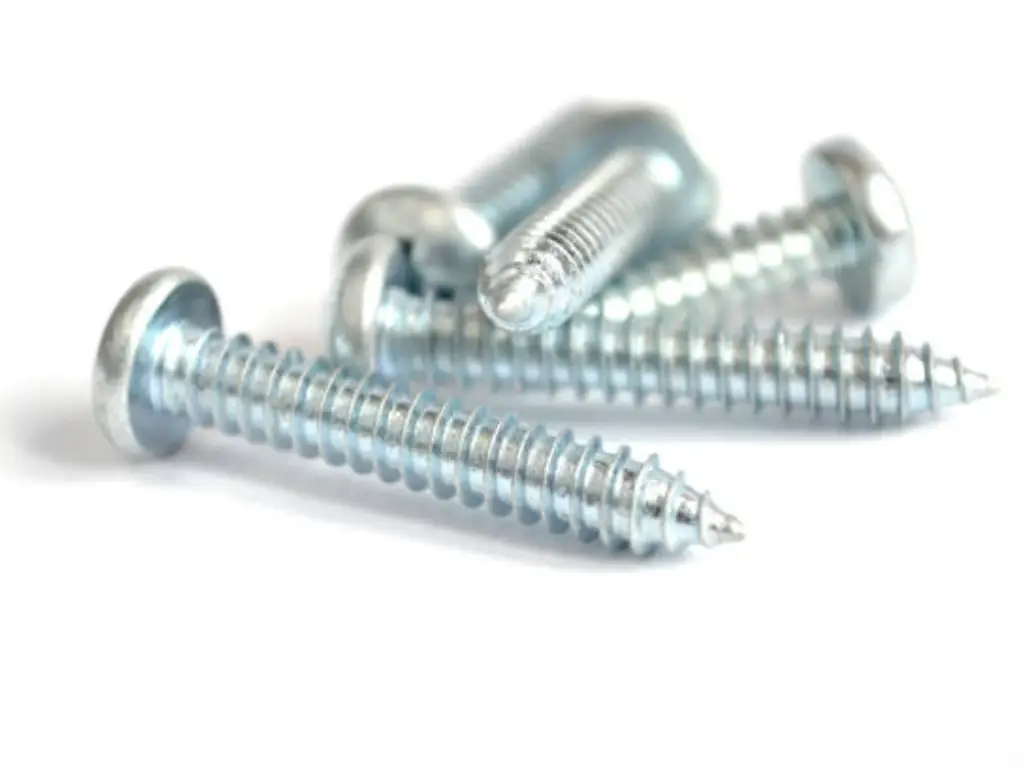
Specialized Screws: From Tamper-Resistant to Eye Screws
Beyond the usual screws, some unique types stand out for specific purposes. For instance, tamper-resistant screws have special designs to prevent unwanted interference. They are like the undercover agents of screws, keeping important things safe in public areas or in sensitive equipment.
On the other hand, eye screws feature loops at their ends, serving a different purpose. They’re not meant for joining materials but for hanging items or attaching wires. Meanwhile, lag screws are the giants in the screw family. These hefty screws are designed for heavy-duty tasks. They can support big loads and secure bulky items. This diversity among screws shows their wide range of applications. Choosing the correct type is crucial for ensuring long-lasting results in your projects.
Coatings and Treatments: Enhancing Screw Durability
Screws come in various shapes, sizes, and also with different coatings and treatments. These additions help improve their durability and how well they perform. For example, a zinc coating helps prevent rust, making these screws good for indoor areas. If you’re dealing with more moisture or outdoor conditions, stainless steel screws, which naturally resist rust, might be a better choice. For even harsher conditions, like outdoor structures or in marine environments, there are special options such as galvanized or ceramic-coated screws. These provide extra protection against rust and wear.
But it’s not just about making them last longer. Some coatings make screws easier to work with by reducing friction. This means you can drive the screws into hard materials more easily. There are also finishes that help the screws look better with the material they’re attaching. Knowing which coating to use can really affect how long and how well your project holds up. So, remember to consider the type of coating on screws. It plays a big role in both their function and appearance.
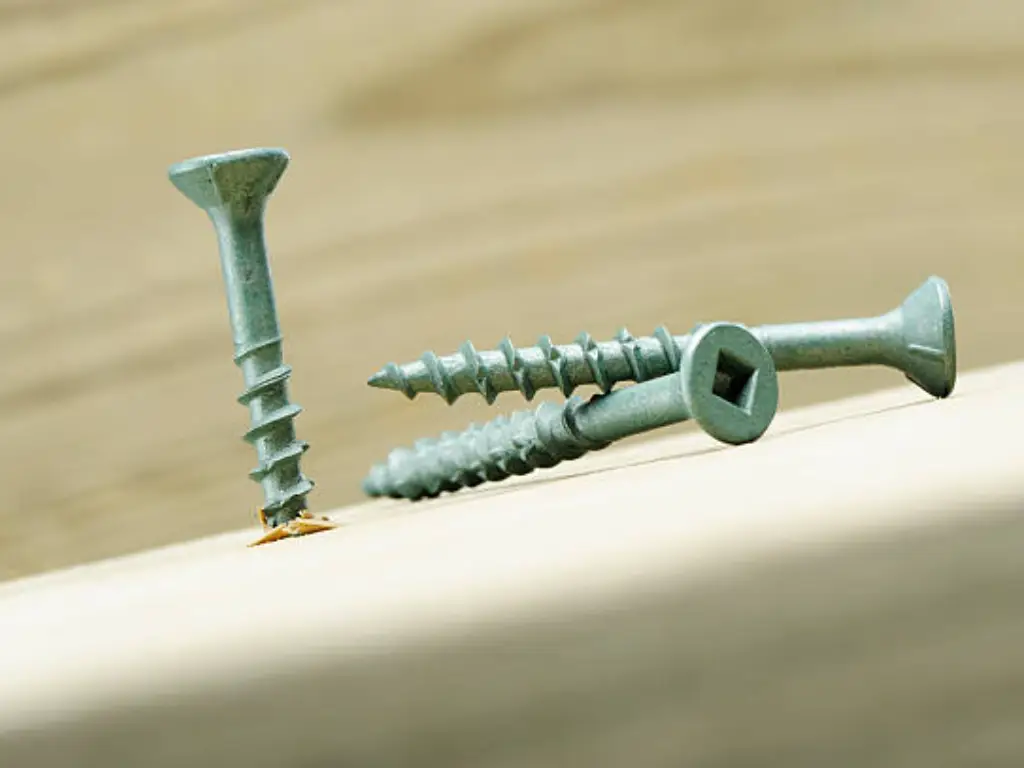
Self Drilling vs Self Tapping Screws: What’s the Difference?
Now, let’s talk about two special types of screws: self-drilling and self-tapping. Self-drilling screws are incredibly convenient. They have a sharp end that drills a hole before making its own threads. This feature saves you from having to pre-drill holes, which is a huge time-saver for any project.
On the other hand, self-tapping screws are designed a little differently. They still create their own threads, but they need a pilot hole to start. This means you’ll have to drill a small guide hole first. Still, they’re great for when you’re working with materials that might not be suitable for self-drilling screws. Both self-drilling and self-tapping screws show the clever design work that makes putting things together faster and easier. By choosing the right type for your project, you can make your work more efficient, whether you’re building with metal or attaching pieces of different materials.
| Feature | Self-Drilling Screws | Self-Tapping Screws |
| Definition | Screws designed to drill their own hole and then form threads within that hole. | Screws that can form or cut threads in pre-drilled or pre-punched holes. |
| Tip Design | Equipped with a sharp, drill-like tip that allows them to penetrate the material without the need for a pilot hole. | Do not have a drill tip and thus require a pilot hole to guide them into the material. |
| Primary Use | Ideal for projects that require quick and efficient fastening, particularly in materials like metal where pre-drilling can be time-consuming. | Suited for creating threads in a variety of materials, including metal, plastic, and wood, where precision and the ability to match the screw to the existing hole is valuable. |
| Advantages | Time-saving as they eliminate the need for pre-drilling. Convenient for use in high-volume projects. Provide a strong and secure hold in materials they are designed for. | Versatile and can be used in a wider range of materials. Allow for more precise fastening when aligning with pre-existing holes. Can be removed and reinserted more easily, making them useful for disassembly and maintenance. |
| Disadvantages | Limited to materials they can effectively penetrate without causing damage. Typically more expensive due to their specialized design. | Additional step of pre-drilling required, which can be time-consuming. Not as efficient for quick, high-volume installations. |
| Ideal Applications | Fastening metal sheets. Securing roofing and siding materials. Projects where speed and efficiency are prioritized. | Applications requiring precision and adjustability. Situations where future disassembly may be needed. Projects involving a variety of material types. |
Common Mistakes to Avoid When Selecting and Using Screws
Everyone, from beginners to experienced DIYers, can sometimes make mistakes with screws. One common error is choosing the wrong length. If a screw is too short, it won’t hold pieces together well. If it’s too long, it might stick out and look bad or cause injury. It’s also easy to pick the wrong material. For example, certain metals rust quickly outdoors if they’re not resistant to corrosion. Another frequent problem is damaging the head of a screw. This happens when you use the wrong type or size of screwdriver, making the task harder than it needs to be.
Not drilling pilot holes in tough materials is another mistake. A bit of drilling before you start can prevent a lot of frustration and physical strain. Over-tightening is another issue. It can ruin the threads of the screw or damage the material it’s in. Screws are reliable, but they can’t take everything. By avoiding these mistakes, you’ll make sure your projects are well put together and long-lasting.
Conclusion
Screws hold together countless types of projects, whether they’re big or small. Knowing about different screws and how to use them not only makes your work more reliable but also more rewarding. Whether it’s understanding how a screw is built, picking the right type for your job, or choosing the best material and coating, every choice matters. With this information, you’re ready to pick the right screw for any project with ease. Here’s to successful projects and no more screwing up!






